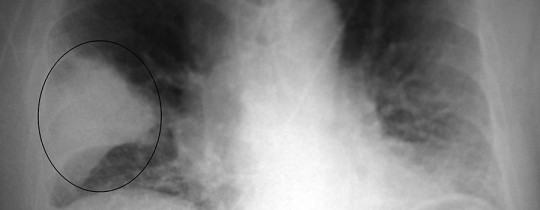Pneumococcal Infection

A pneumococcal infection is a type of infection caused by bacteria. There are over 90 different strains of bacteria that cause pneumococcal infections, known as serotypes. They are all part of a family of bacteria called Streptococcus pneumoniae, which is responsible for pneumonia when the bacteria enter the body through nose or mouth and attack the lungs. However, these bacteria can also get into the bloodstream, tissues, and fluids that surround the spinal cord and the brain. This causes meningitis. According to the Centers for Disease Control and Prevention, these types of infections are fatal to thousands of Americans each year, most of whom are elderly.
Symptoms
A pneumococcal infection can manifest itself in a variety of different ways. It depends on the route of entry and the part of the body that is under attack from the bacteria. There are two main types of pneumococcal infections: non-invasive and invasive. Non-invasive pneumococcal infections do not affect any of the body’s organs and are usually less severe. Invasive pneumococcal infections infect large organs, such as the brain, and can pose a serious threat to health.
Types of non-invasive pneumococcal infections include bronchitis, otitis media, and sinusitis. Bronchitis affects a part of the lungs called the bronchi. Bronchi are small tubes that connect the lungs to the windpipe. Otitis media is an infection that occurs in the middle ear. It usually occurs in children. Finally, sinusitis is a sinus infection that occurs in the nasal cavity.
Types of invasive pneumococcal infections range from bacteremia, septicemia, osteomyelitis, septic arthritis, pneumonia, and meningitis. Bacteremia and septicemia are both blood infections; however, the former is milder while the latter is more severe. Osteomyelitis is a bone infection and septic arthritis affects joints. Pneumonia and meningitis are the two most common manifestations of pneumococcal infections, affecting the lungs and the brain, respectively.
Causes
Some people are more likely than others to become sick because of a pneumococcal infection. Having an already weak immune system is the most significant risk factor. For instance, people who have health conditions that affect their immune systems, such as diabetes or HIV, are more likely to be at risk. Those who are taking medication or undergoing therapy that affects the functioning of the immune system, including chemotherapy, are also at risk. Other groups that have a heightened risk of contracting a pneumococcal infection include young children and infants, adults over the age of 65, and alcoholics. Infections are more likely to occur sometime between late fall and early spring, with the winter months seeing the highest number of cases.
In the cases of pneumonia and bronchitis, people who have chronic conditions associated with poor lung functioning are also at an increased risk of developing an infection. For instance, asthma, chronic obstructive pulmonary disease, or chronic bronchitis are all conditions that can increase someone’s susceptibility to infection.
Prevention
There are currently two types of vaccines which prevent these infections. They include the pneumococcal conjugate vaccine, or PCV, and the pneumococcal polysaccharide vaccine, or PPV. Each vaccine targets a specific population to prevent the development of an infection. The PCV is for children below the age of two years. It is regularly given to children as part of their childhood vaccinations and according to Web MD, it protects against 13 different strains of bacteria. The PPV is for those who are considered high-risk in the adult population, for example, those who are over the age of 65. It is also recommended for people who have chronic illnesses and weak or deficient immune systems. The PPV protects against 23 different types of Streptococcus pneumoniae bacteria. Estimates suggest that its effectiveness at preventing the development of a serious, invasive pneumococcal infection is between 50 and 70%.
Treatment
Pneumococcal infections are primarily treated with antibiotics. In the early 1960s, they were even treatable with penicillin; however, since that time, most strains of the bacteria have developed resistance to this particular drug. There are some other types of antibiotics which also have high rates of bacterial resistance, including tetracycline, cephalosporins, macrolides, and quinolones. It often depends on the strain, as some of them are resistant to more than one type of antibiotic drug.
Today, treatment often involves a combination of cephalosporins and another type of drug, at least in cases of pneumonia and meningitis.
